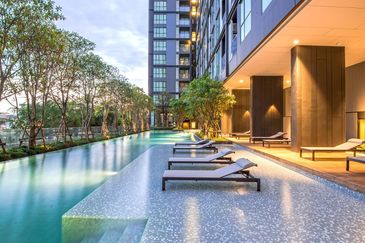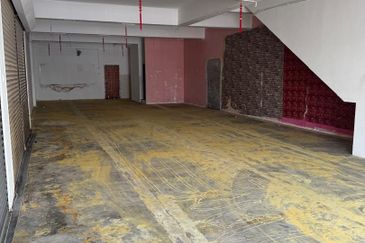- The 14th International Conference on World Class Sustainable Cities (WCSC) 2023 looks at how the world endeavours to reconcile urbanisation with sustainability objectives.
KUALA LUMPUR (Sept 26): Cities serve as essential community nodes, making the creation of safe spaces a global government priority. Yet, they are also significant sources of carbon emissions, requiring strategies for designing sustainable living conditions that harmonise with the environment. The 14th International Conference on World Class Sustainable Cities (WCSC) 2023 tackles this dual-focused ambition as the world endeavours to reconcile urbanisation with sustainability objectives.
The conference with the theme: Resilient Urbanisation Planning Towards Malaysia MADANI, opened with an insightful overview of Nusantara, Indonesia’s new capital that is being developed from scratch in East Kalimantan, about 2,000km away from the current capital, Jakarta.
Read also:
WCSC 2023 drives proactive urban development practices to achieve resilient cities
A challenge to walk … in the city
EdgeProp presents: Resilient urbanisation — do we have what it takes?
City living on the rise with 26 mil Malaysians calling urban areas their home
Prasarana CEO emphasises public transport ecosystem optimisation for Kuala Lumpur’s resilience at WCSC 2023
Presenting the paper “Sustainable Urbanisation in a New Frontier at Nusantara,” Silvia Halim, deputy for Facilities & Infrastructure, Nusantara National Capital Authority, Indonesia took the audience on a journey through the planning and implementation of the Nusantara masterplan. The city is scheduled for completion in 2045, in time for Indonesia’s centennial celebration.
“The estimated investment cost for the development of this city is US$32 billion. Nusantara’s vision is to be the World Class City for All, a symbol of national identity and the economic driver for Indonesia’s future. Of course, we also aim to be the world’s sustainable city,” she shared.
The makings of a world-class sustainable city, built from scratch
As a sustainable city initiative, Nusantara will actively track its climate change targets and ensure biodiversity and wildlife habitats are preserved. The city will be built based on three main concepts – Forest City, Sponge City and Smart City.
“We are aiming for 75% of the new capital to be green spaces, and of this, 65% will be tropical forests, which we will achieve through reforestation. Our task is to rehabilitate the ex-mining area and to replace the existing monoculture areas with endemic plants. Only 25% will be urban built areas,” Silvia explained.
To ensure the sustainability of its built environment, Silvia revealed that plans are underway to develop a roadmap for development using sustainable material.
“It is currently an option but we intend to make it mandatory and for all buildings to obtain at least a Gold level certification. We may look at introducing incentives to entice adoption,” she added.
To manage mobility within the city, Silvia said that Nusantara was being developed as a 10-minute city, promoting walkability as “everything will be within a 10-minute walk”. She stressed that from the start, the city will prohibit the entry of private vehicles and two-wheelers to ensure public transportation or walking prevails.
Challenges to opportunities: How cities embrace resilience
The second presentation for the day by James Tuma, group director, Future State, Urbis took the audience through 14 cities in the world that exemplify innovation and resilience. Speaking on “Resilient Urbanisation: Inclusive Cities through Good City Design” Tuma pointed out that the success stories of these cities offered valuable lessons and inspiration for cities worldwide.
“Inclusive, resilient, and innovative cities serve as models for the future, addressing the challenges of today while preparing for the uncertainties of tomorrow. These cities prioritise people, emphasise planning and infrastructure delivery, and build social capital, educational attainment, and economic productivity. They also invest in data collection and measurement, enabling the implementation of effective resilience programmes,” he explained.
Tuma noted that the World Bank identifies inclusive cities as those possessing three key characteristics: spatial inclusion, social inclusion, and economic inclusion.
He added that spatial inclusion ensures citizens' access to essentials like water, sanitation, affordable housing, and balanced spatial wealth distribution within the city. Social inclusion aims to empower even the most marginalised segments of society, providing them with a voice and dignity. Economic inclusion focuses on job creation and equitable access to economic opportunities, enabling all citizens to contribute to the city's success.
Building homes for inclusive cities
Touching a topic of an on-going challenge in Malaysia, “Building Affordable Homes for People and Nature”, Saravanan Sugumaran managing director, Morrow Intelligence, Singapore talked about the evolution of Singapore’s acclaimed housing strategy.
Saravanan sees housing as a significant driver of a nation’s economic and social growth. He emphasised acquiring the people’s trust as a key factor established by the Singapore government that propelled the HDB homeownership programme to success.
Describing public housing as an “extremely complex cross-cutting issue”, Saravanan stressed that it involves trying to solve a multitude of challenges from different angles. Singapore dealt with it with a long-term thinking around public housing and weighing the trade-offs of the complex problem.
He stressed three main priorities that helped Singapore with its public housing – Planning for highly self-sufficient new towns, Homeownership for all and Housing Affordability measures.
In pursuing its development and housing strategy, the Singapore government remained committed to conservation, so nothing was lost even in the development of the radius. Infrastructure played a central role. New towns were designed with neighbourhood projects, creating a hierarchy from town centres to precincts. This approach fostered connectivity and inclusivity; ensuring residents have access to amenities. Singapore's high-rise facilities cater to diverse catchments, uniting communities and promoting future-driven amenities. The city's planning emphasised connectivity, with integrated hubs serving as economic centres. Housing is strategically located near complementary industries, facilitating residents' commute.
A stake in the wealth of the nation through homeownership
Saravanan noted that the ex-prime minister’s [Lee Kuan Yew] vision was to ensure ownership is a cornerstone, providing citizens with a stake in the nation's wealth, fostering a sense of identity and community. Singapore's model integrates sustainable economic development, promoting resilience and liveability while preserving its commitment to conservation.
In support of fair and equal ownership and to maintain social integration, the public housing policy focused on income series tying accessibility to the types of homes based on people’s salaries. Income mixing is also practiced to democratise the spread of public housing and facilitate the mixing of varied socio-economic groups while the ethnic integration policy was important to ensure the integration of the island republic’s multi-ethnic society.
Public housing accounts for about 80% of the homes in Singapore and most of it is government-driven. Homeownership in Singapore is currently close to 90% and affordability ratio is 4.5 for public housing, the lowest in the region.
Government central to resilient cities
The first Network Discussion at the conference got the three speakers of the day talking on the topic “Accelerating Implementation for Resilient Cities & Communities”. The session was moderated by Carrie Fong, deputy chairperson of REHDA Wilayah Persekutuan Kuala Lumpur, while Sufian Abdullah, CEO, UEM Sunrise; Khairiah Talha, past president, Malaysia Institute of Planners; and Datuk Ar Ezumi Harzani, past president, Pertubuhan Akitek Malaysia (PAM) were the appointed interveners, posing questions to stimulate the discussion.
The panel discussion centred on the important role of the government in pushing the agenda for sustainable and resilient cities, as well the integration of various agencies and associations towards the resiliency framework, especially in recognising the needs of the community.
In Nusantara, for instance Sylvia explained how the planning involves the non-civil servants and the private sector who have been in the industry and likely to have first-hand experience, crucial to planning and policy-making moving forward.
Getting organisations, society, government and the private sector to collaborate towards the common goal of creating resiliency in cities is a crucial step to its achievement, while education and awareness are also important in the process to learn about the systems and issues that could pose challenges.
The panel discussion also touched on the role of infrastructure and creating inclusive support systems for the whole community, especially bridging the digital gap among the older generation as technology becomes the centre point of future cities.
The WCSC conference with the endorsement of Kuala Lumpur City Hall (DBKL), is jointly organised by Real Estate and Housing Developers’ Association Wilayah Persekutuan Kuala Lumpur (REHDA WPKL), PAM and Malaysian Institute of Planners (MIP). The one-day conference encompassed seven speakers from Malaysia, Indonesia, Thailand, Singapore and Australia.
Looking to buy a home? Sign up for EdgeProp START and get exclusive rewards and vouchers for ANY home purchase in Malaysia (primary or subsale)!
TOP PICKS BY EDGEPROP

Kenwingston Skylofts USJ 1
Subang Jaya, Selangor

Subang Jaya City Centre (SJCC) : Teja
Subang Jaya, Selangor

Taman Perindustrian Air Hitam Phase 1
Klang, Selangor

Ridgefield Residences @ Tropicana Heights Kajang
Kajang, Selangor

Jalan Taman Setiawangsa
Taman Setiawangsa, Kuala Lumpur
























